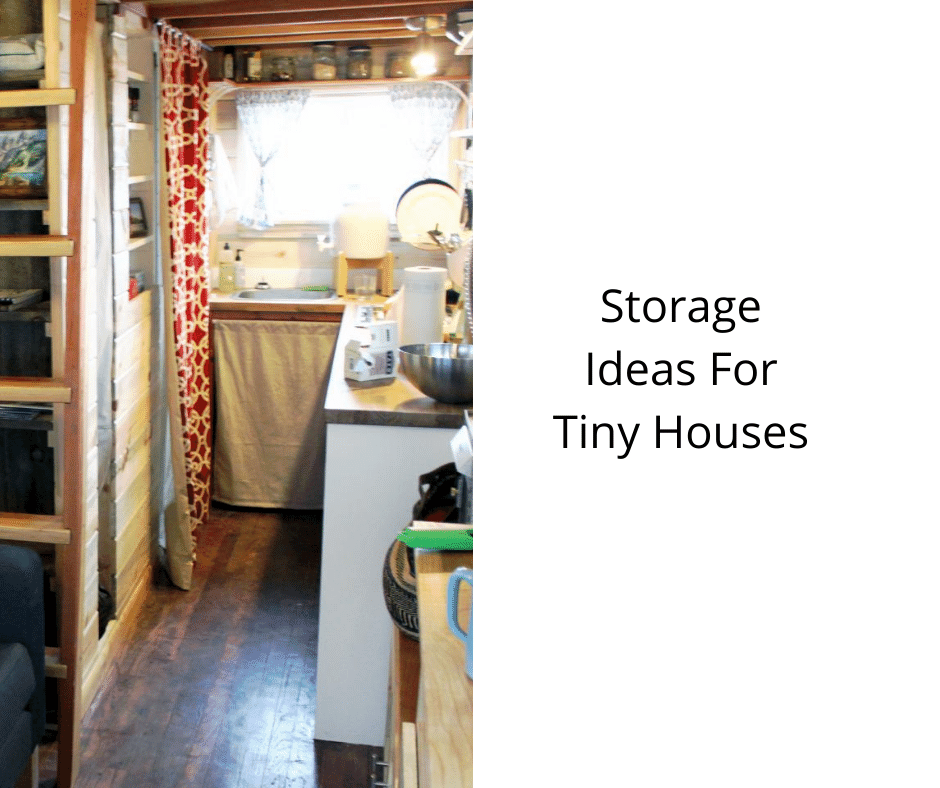Types of Tiny Houses
How Could You Get a Tiny House Out of a Clothes Rack Yard

I have always been intrigued by the concept of transforming small spaces into livable homes. When I discovered the idea of converting a clothes rack yard into a tiny house, I was immediately interested.
In this article, I’ll guide you through the process of assessing the space, designing the layout, choosing the right materials, and incorporating space-saving solutions.
Get ready to transform your clothes rack yard into a cozy and practical miniature home. Let’s get started!
Key Takeaways
- Utilize vertical space and clever storage solutions to maximize the use of limited square footage in a tiny house in a clothes rack yard.
- Consider using sustainable materials like bamboo, recycled steel, and straw bales to minimize environmental impact and ensure structural integrity.
- Implement space-saving storage solutions such as vertical shelving units, furniture with built-in storage compartments, and under-bed storage containers.
- Personalize the tiny house by utilizing wall space for personalized gallery walls, adding pops of color and personality, and accessorizing with textiles for comfort and warmth.
Assessing the Space: Understanding the Potential of a Clothes Rack Yard
As I step into the clothes rack yard, I’m amazed by the potential that lies within this small space. When it comes to constructing a tiny house, utilizing vertical space is key.
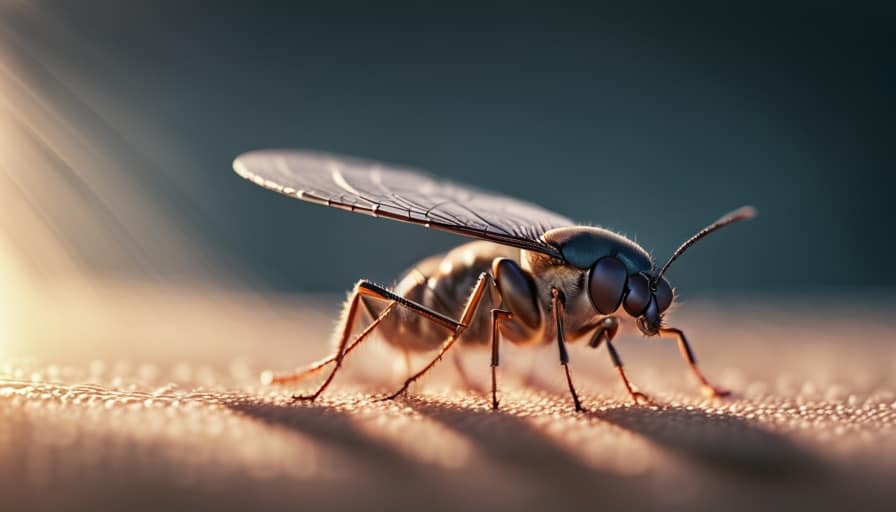
In a clothes rack yard tiny house, it’s crucial to make the most of the limited square footage available. By incorporating clever storage solutions such as vertical shelving units or hanging racks, you can maximize the use of the space and keep your belongings organized.
Additionally, outdoor living is an essential aspect of a clothes rack yard tiny house. Creating functional outdoor areas, such as a small patio or a rooftop garden, allows you to extend your living space and enjoy the fresh air.
Designing the Layout: Maximizing Functionality in a Tiny House
When designing the layout of my tiny house, I wanted to maximize functionality by carefully considering the placement of each element. Optimizing furniture was crucial in order to make the most of the limited space. I chose multi-functional pieces that served multiple purposes, such as a sofa that could also be transformed into a bed, or a dining table that could double as a workspace. This allowed me to have all the necessary furniture without sacrificing space.
Additionally, utilizing vertical space was essential in creating a practical tiny house layout. I installed shelves and cabinets that reached up to the ceiling, making use of every inch of available space. I also utilized wall-mounted organizers and hooks to hang items and keep them off the floor. By thinking creatively and finding innovative storage solutions, I was able to make the most of the vertical space and keep my tiny house organized and clutter-free.
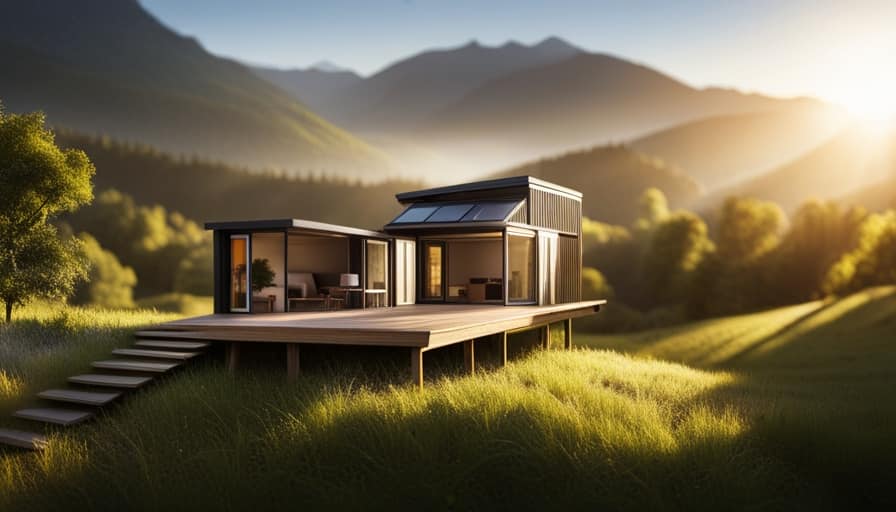
Choosing the Right Materials: Building a Sturdy and Sustainable Miniature Home
I can choose the right materials to build a sturdy and sustainable miniature home. When it comes to sustainable construction and using eco-friendly materials, there are several options to consider. Here is a table that outlines three materials that are both durable and environmentally friendly:
| Material | Description | Benefits |
|---|---|---|
| Bamboo | A fast-growing grass that is strong and versatile. | Renewable resource, high strength-to-weight ratio, natural beauty. |
| Recycled Steel | Steel made from recycled materials, reducing the need for new production. | Durable, fire-resistant, recyclable. |
| Straw Bales | Bales made from agricultural waste, providing excellent insulation. | Renewable, affordable, energy-efficient. |
Choosing these materials not only ensures the structural integrity of your miniature home but also minimizes your environmental impact. By incorporating sustainable construction practices and using eco-friendly materials, you can create a space that is both functional and environmentally responsible. With the right materials, you can build a sturdy and sustainable miniature home that will stand the test of time.
Now, let’s explore space-saving solutions and clever storage ideas for a clothes rack yard tiny house.
Space-Saving Solutions: Clever Storage Ideas for a Clothes Rack Yard Tiny House
With limited space in my clothes rack yard tiny house, I can utilize clever storage ideas to maximize the available area. Space saving tips and organizing hacks are essential for making the most of every nook and cranny in my small living space.

One idea is to use vertical storage solutions, such as installing shelves or hanging baskets on the walls. This allows me to keep items off the floor and free up valuable floor space.
Another clever storage solution is to use furniture with built-in storage compartments, such as ottomans or beds with drawers underneath.
Additionally, I can utilize under-bed storage containers or wall-mounted hooks to hang items like coats or bags.
Adding Personal Touches: Decorating and Making a Clothes Rack Yard Tiny House Feel Like Home
To truly make my clothes rack yard tiny house feel like home, I plan on sprucing it up with some personal touches and adding my own unique style. Here are some decorating ideas and personalization options that can transform a small space into a cozy and inviting home:

-
Utilize wall space: Hang photos, artwork, or shelves to display cherished items and create a personalized gallery wall. This will add visual interest and make the space feel more like your own.
-
Choose colors and patterns: Use paint, wallpaper, or fabric to add pops of color and personality to your tiny house. Incorporate patterns and textures that reflect your personal style and make the space feel vibrant.
-
Accessorize with textiles: Add comfort and warmth with soft throws, pillows, and rugs. Choose fabrics that you love and that make you feel at ease, creating a cozy atmosphere in your tiny house.
Frequently Asked Questions
How Much Does It Cost to Build a Tiny House Out of a Clothes Rack Yard?
To build a tiny house out of a clothes rack yard, the cost of materials can vary depending on your design and preferences. Additionally, check local zoning restrictions to ensure you comply with regulations.
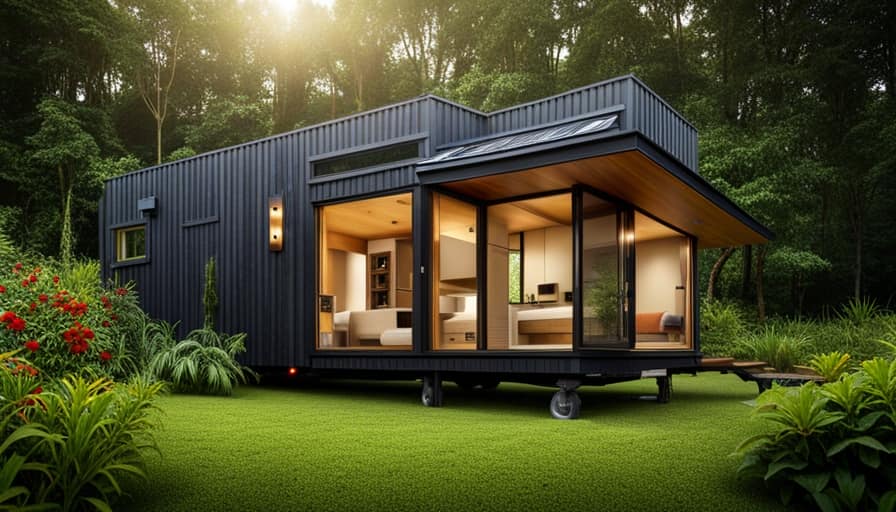
What Are the Legal Requirements and Permits Needed to Build a Tiny House in a Clothes Rack Yard?
Legal requirements and permits needed to build a tiny house in a clothes rack yard vary by location. Contact your local zoning department to determine if it’s allowed and what regulations you need to follow.
Can a Tiny House Built in a Clothes Rack Yard Be Relocated Easily?
Relocating a tiny house from a clothes rack yard can pose challenges, but it’s doable. The benefits of using a clothes rack yard include affordability and convenience. Planning ahead and hiring professionals can make the process easier.
Can I Live in a Tiny House Built in a Clothes Rack Yard Full-Time?
Living full time in a clothes rack yard tiny house has its benefits. It offers affordability, simplicity, and a minimalistic lifestyle. However, ensuring the house is properly secured and easily movable is important for long term living.
How Long Does It Take to Construct a Tiny House Using a Clothes Rack Yard as a Base?
Constructing a tiny house using a clothes rack yard as a base requires careful planning, cost estimation, and resource management. The time required for construction depends on factors such as the complexity of design, availability of materials, and the skill level of the builder.
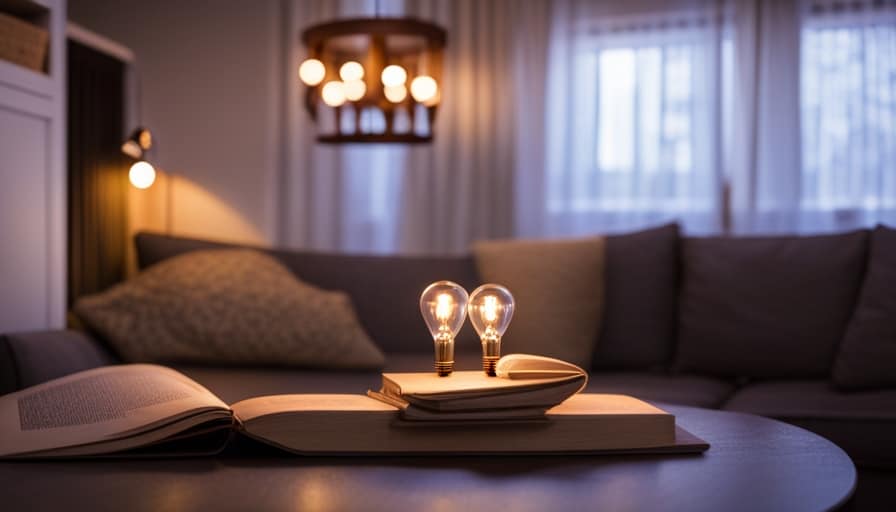
Conclusion
In conclusion, transforming a clothes rack yard into a tiny house is an exciting and challenging project.
By assessing the space, designing a functional layout, choosing the right materials, and implementing space-saving solutions, you can create a cozy and sustainable miniature home.
Adding personal touches with decorations will make it feel like home.
Just like how a wardrobe can hold a multitude of clothes, a clothes rack yard can hold endless possibilities for a unique and efficient living space.
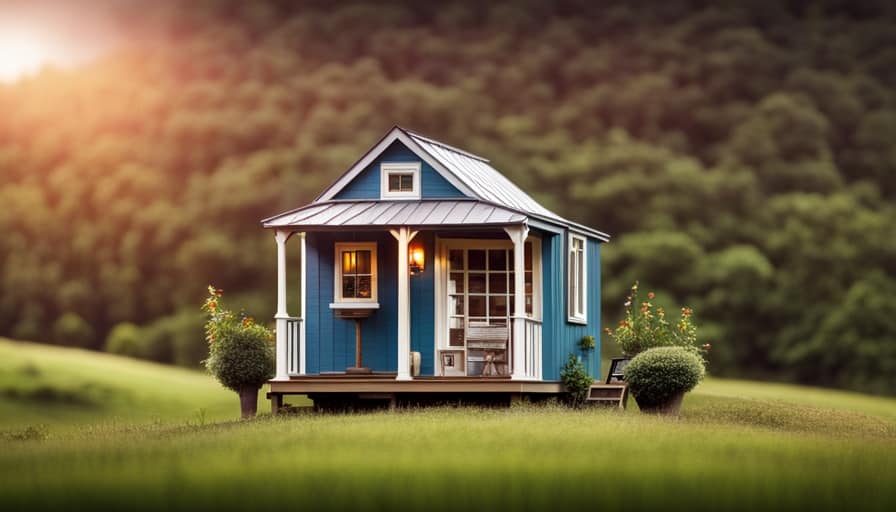
I’m Theodore, and I love tiny houses. In fact, I’m the author of Tiny House 43, a book about tiny houses that are also tree houses. I think they’re magical places where imaginations can run wild and adventures are just waiting to happen.
While tree houses are often associated with childhood, they can be the perfect adult retreat. They offer a cozy space to relax and unwind, surrounded by nature. And since they’re typically built on stilts or raised platforms, they offer stunning views that traditional homes simply can’t match.
If you’re looking for a unique and romantic getaway, a tree house tiny house might just be the perfect option.
Types of Tiny Houses
Minimalist Living: Introducing The Minim Tiny House
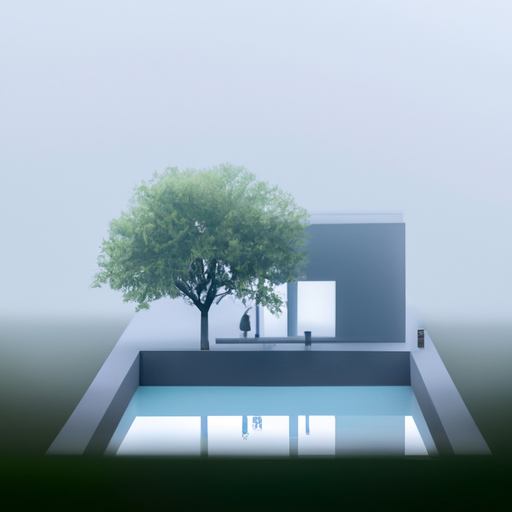
At first, I thought that small houses were just a passing trend – a fascination that would soon disappear, giving room for the next big breakthrough in home design. But my viewpoint completely changed when I came across the Minim Tiny House.
This iconic and revolutionary home has completely transformed the way I think about living small, and I’m excited to share my experience with you.
The Minim Tiny House is unlike anything I’ve ever seen before. With no loft and no walls, it’s hard to believe that this home is only 265 square feet. But as soon as you step inside, you’re greeted by the most incredible vaulted ceilings and a sense of spaciousness that is truly mind-blowing.
And with a full-size roll-out bed, a highly functional 10′ galley kitchen, and a moveable hydraulic table, this home is as practical as it is beautiful.
I can’t wait to share more about the design and features of the Minim Tiny House, so let’s get started!
Key Takeaways
- The Minim Tiny House is a revolutionary home that challenges the idea of living small.
- Despite having no walls or loft, the house is still spacious and includes separate areas for sleeping, working, and relaxing.
- The house maximizes every inch of its 210 ft2 interior space, with features such as a full-size roll-out bed, 10′ galley kitchen, moveable hydraulic table, and large movie screen/window shade.
- The design of the Minim Tiny House has been refined over 7 months of planning and 6+ years of full-time life testing, and the plans are available on Tiny House Blog for DIY. The cost to have it built for you is around $70,000.
Design and Features
I’m impressed by the Minim Tiny House’s design and features. It includes a full-size roll-out bed, a highly functional 10′ galley kitchen, a moveable hydraulic table, and a large movie screen that doubles as a window shade. The vaulted ceilings give the interior a spacious feel, despite its compact size.
The functional layout is also notable, with separate areas for sleeping, working, and relaxing. The 8′ long sofa that seats 5 and doubles as a guest bed is a clever space-saving solution. The Minim Tiny House’s design has been refined over 7 months of planning and 6+ years of full-time life testing.
The result is a thoughtfully designed home that maximizes every inch of its 210 ft2 of interior space. The separate 5′ desk and 5′ closet on top of the bed platform are particularly impressive, as is the ‘wet bath’ that accommodates any type of toilet desired. Overall, the Minim Tiny House is a great example of minimalist living done right.
Cost and Dimensions
The cost to build the Minim dwelling is approximately $35,000, with an approximate weight of 14,000# and dimensions of 11’x22′ providing 210 ft2 of interior space. Building process is straightforward, and the plans are available on Tiny House Blog. With a bit of DIY experience, anyone can build their own Minim house and customize its features to their liking.
If you prefer to have it built for you, the approximate cost would be around $70,000. However, it’s important to note that there are customization options available, so the final cost may vary depending on your preferences.
Whether you choose to build it yourself or have it built, the Minim tiny house offers a practical and efficient living space that allows for a contented life with minimal dwelling size.
Reader Feedback
Upon reading feedback from a reader, it appears that the interior design of the Minim dwelling has been well-received, while the exterior may not be to everyone’s taste. While the Minim Tiny House has a sleek and modern design, it may not appeal to those who prefer a more traditional look. However, it’s important to note that the exterior of the Minim Tiny House can easily be transformed with the right grounds and personalization options.
To give you an idea of the possibilities, I’ve created a table below showcasing some exterior transformation ideas that can completely change the look and feel of the Minim Tiny House. From adding a porch to incorporating natural elements, there are plenty of ways to make this dwelling your own. With a little creativity and attention to detail, the Minim Tiny House can be transformed into the perfect home for any minimalist living enthusiast.
| Exterior Transformation Ideas | Description | |||
|---|---|---|---|---|
| Add a Porch | Extend the living space and add an inviting touch with a small porch. | |||
| Incorporate Natural Elements | Use wood and stone accents to create a warm and inviting exterior. | |||
| Change the Color Scheme | Experiment with different colors to create a unique and personalized look. | |||
| Add Landscaping | Use plants and landscaping to create a beautiful and natural setting around the tiny home. | Incorporate Outdoor Lighting | Install exterior lighting to enhance the ambiance and provide safety at night. |
Frequently Asked Questions
What type of toilet can be accommodated in the ‘wet bath’ of the Minim Tiny House?
I’ll keep it simple. The wet bath in the Minim Tiny House can accommodate any toilet options, making space utilization a non-issue. Euphemistically speaking, it’s a functional toilet in a compact bathroom.
How is the through-the-wall A/C unit hidden into the desk shelving for cooling?
I hid the through-the-wall a/c unit into my desk shelving for cooling in the Minim Tiny House. It’s a practical solution that saves space and keeps the interior clutter-free. The desk doubles as a functional storage area, making it an efficient use of space.
Can the Minim Tiny House be customized with different exterior designs?
Customization options for the Minim Tiny House are endless, allowing you to transform the exterior into anything you desire. It’s like painting a blank canvas, giving you the freedom to create a unique and personalized look.
What inspired the author to turn a $600 trailer into a $100,000 Minim Tiny House?
My motivation was to create a functional, beautiful home that challenged the notion of what a house should be. The design concept evolved after years of testing, resulting in a space that maximizes every inch.
Is there any recommended towing vehicle for the Minim Tiny House?
For the Minim Tiny House, a recommended towing vehicle should have a weight capacity of at least 14,000 pounds. I suggest doing research and consulting with a professional to ensure safe transportation.
Hi, I’m Emma. I’m the Editor in Chief of Tiny House 43, a blog all about tiny houses. While tree houses are often associated with childhood, they can be the perfect adult retreat. They offer a cozy space to relax and unwind, surrounded by nature. And since they’re typically built on stilts or raised platforms, they offer stunning views that traditional homes simply can’t match. If you’re looking for a unique and romantic getaway, a tree house tiny house might just be the perfect option.
Types of Tiny Houses
Builder Mike’s Bright Tiny House: A Masterpiece of Minimalist Living
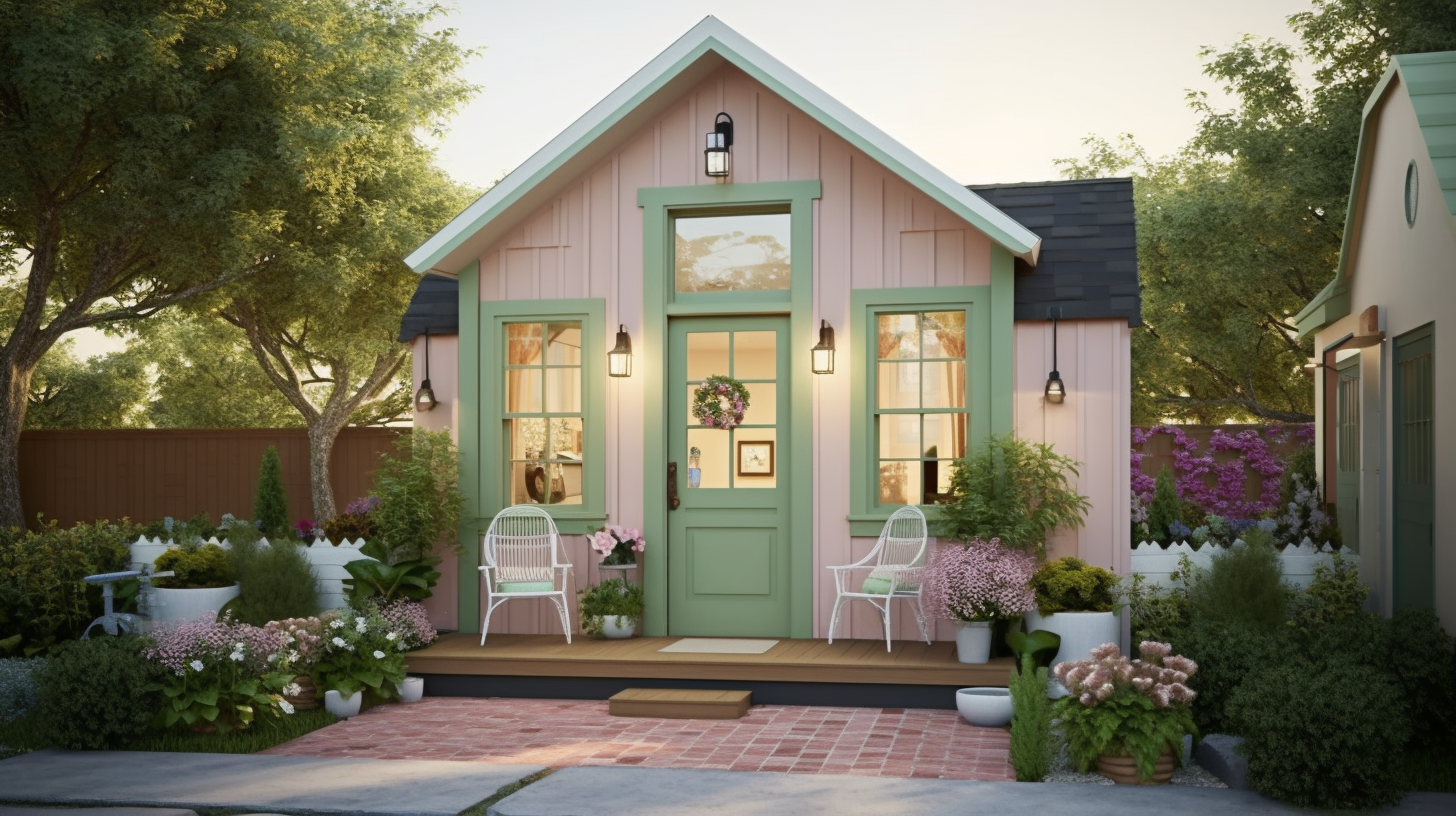
Builder Mike’s Bright Tiny House: A Small-Footprint Dream!
Mike’s Bright Tiny Home embodies the concept of minimalist living with its compact layout. Measuring 30×10 feet and standing at a height of 10 feet 8 inches, this cozy dwelling is a testament to the builder’s skill in creating small, yet functional spaces. It reflects his expertise in building larger homes as well as his newfound commitment to reducing his environmental impact.
In this article, we will explore the features of Builder Mike’s Bright Tiny House, including its living space, design, and functionality. We will also delve into the builder’s experience and expertise in constructing small homes and his recommendations for certification.
Whether you are looking to buy a tiny house or commission a custom home, this article will provide you with valuable insights into the world of small-footprint living.
Key Takeaways
- Builder Mike’s Bright Tiny House is a 30×10 feet living space designed to maximize functionality and comfort within a small footprint.
- The tiny house incorporates storage throughout, large windows for natural light, and a pass-through window connecting indoor and outdoor living spaces.
- Certification and professional inspection are recommended for safety, compliance with building codes, and increased resale value, with DIY options being cost-effective but requiring adherence to regulations and safety measures.
- Living in a tiny house can help individuals simplify their lives, reduce their carbon footprint, save money, and live a more sustainable lifestyle.
Living Space Features
The living space of Builder Mike’s tiny house is designed to maximize functionality and comfort within a small footprint. The many large windows create a bright and airy atmosphere, making the space feel larger than it is. A pass-through window connects the indoor and outdoor living spaces, creating a seamless transition between the two. This feature not only adds to the overall aesthetic of the tiny house but also provides a practical way to bring in fresh air and natural light.
In addition to the pass-through window, the living space also includes an L-shaped counter seating area that serves as both a dining space and a work-from-home area. The counter seating is strategically placed to maximize the space and provide ample room for multiple functions.
Storage is also incorporated throughout the tiny house, including in the bathroom, making the most out of every inch of the living space. These design features showcase Builder Mike’s ability to create a functional and comfortable living space within a small footprint, without sacrificing style or practicality.
Builder’s Experience and Expertise
With a background in constructing large-scale homes, Builder Mike has embraced the challenge of building compact dwellings. His experience in building massive homes has helped him to refine his building techniques and design inspiration. As a result, he has become an expert in constructing small-footprint homes that are both functional and aesthetically pleasing.
He shares his knowledge and experience with those who are interested in his work, providing insight into the certification process and the best practices for building tiny houses. To evoke emotion in his audience, Builder Mike emphasizes the benefits of living in a tiny house.
He highlights how his own downsizing experience has allowed him to simplify his life and focus on what truly matters. He also notes that living in a tiny house can help individuals reduce their carbon footprint, save money, and live more sustainably.
By sharing his own experience with building and living in a tiny house, Builder Mike inspires others to consider the advantages of living in a small-footprint home.
Certification Recommendations
Certification of tiny houses is a topic of great importance, and it is recommended that individuals bring in a professional to inspect their home before seeking certification.
Certification offers several benefits, including peace of mind and an assurance of safety. It provides a way for individuals to ensure their tiny home meets building codes and regulations, which can be especially important for those who plan to travel with their tiny house. Certification also increases the resale value of the home and can help with financing options.
For those who choose to build their tiny homes themselves, certification may not be a priority. However, it is still important to ensure the home is safe and meets building codes. DIY options for tiny house building can be cost-effective, but it is crucial to research and understand the regulations and safety measures that must be followed.
Bringing in a professional for an inspection can help identify any potential issues and provide guidance on how to address them. Ultimately, whether seeking certification or not, ensuring the safety and compliance of a tiny home should be a top priority for all builders.
Benefits of Certification DIY Options for Tiny House Building Importance of Safety and Compliance Provides peace of mind Cost-effective Ensures safety of occupants Assures safety Must understand regulations Compliance with building codes Increases resale value Professional inspection recommended Importance of following regulations can prevent costly legal issues or accidents in the future.
Frequently Asked Questions
What materials were used to construct the tiny house?
The materials used in constructing a tiny house vary depending on the builder’s preference. However, sustainable building and cost-efficient materials are usually the top considerations.
Sustainable building materials are those that have a low environmental impact, such as reclaimed wood, bamboo, and recycled steel.
On the other hand, cost-efficient materials are those that are readily available and affordable, such as concrete blocks, corrugated metal, and fiber cement.
These materials not only reduce construction costs but also provide durability and energy efficiency. The use of these materials in tiny house construction has become increasingly popular due to their positive impact on the environment and cost-effectiveness.
How long did it take to build the tiny house?
The construction timeline and building process of Builder Mike’s tiny house are unknown without additional context. However, it is common for a tiny house to take anywhere from several months to a year to build, depending on the size, complexity, and availability of materials.
The building process typically involves designing the layout and selecting materials, framing the structure, installing insulation, electrical and plumbing systems, and finishing the interior and exterior. It may also involve obtaining permits and certifications, depending on local regulations.
Overall, building a tiny house requires careful planning, attention to detail, and a willingness to work with limited space and resources.
What challenges did Builder Mike face while building the tiny house?
Budget constraints and zoning regulations are two major challenges that builders face when constructing tiny homes. With limited space, it can be difficult to fit everything necessary into such a small footprint, and the cost of materials and labor can quickly add up.
Additionally, zoning regulations can vary widely by region, making it difficult to find a suitable location to build and park a tiny home. Builder Mike likely faced similar challenges when building his tiny house, but his experience in the industry and expertise in design likely helped him to overcome these obstacles.
Despite the challenges, the end result is a beautiful and functional home that showcases the benefits of living in a small space.
Has Builder Mike built any tiny houses with unique features or designs?
Builder Mike has demonstrated his innovative designs and creative use of space in his tiny houses. He has built homes with unique features such as pass-through windows, L-shaped counter seating, and strategically placed storage areas.
His experience in building massive homes before transitioning to small-footprint homes has helped him improve his designs and make the most of limited space. Additionally, he has helped his neighbors with repairs and other handyman projects, further showcasing his expertise in the field.
While Mike recommends bringing in someone to inspect a certified tiny house, his designs demonstrate his attention to detail and commitment to creating functional and aesthetically pleasing tiny homes.
How does Builder Mike incorporate sustainable and eco-friendly practices into his tiny house builds?
It is quite ironic how small-footprint homes have become a trend despite their potential to contribute to a more sustainable and eco-friendly way of living.
Nevertheless, Builder Mike has taken this trend to the next level by incorporating sustainable practices into his tiny house builds.
He uses eco-friendly insulation to ensure energy efficiency and reduce carbon footprint.
Additionally, he integrates solar power into his designs, which not only reduces his dependence on the grid but also saves money in the long run.
By doing so, he is not only creating a comfortable living space but also setting an example for others to follow.
Conclusion
In conclusion, Builder Mike’s tiny house is a marvel of small-footprint design. Its features are impressive, from the high ceilings to the bright colors that make the space feel open and welcoming. Builder Mike’s experience as a former builder of massive homes has certainly helped him in his transition to building tiny homes. His expertise is evident in the thoughtful layout of his tiny house and the attention to detail in its construction.
As for certification, Builder Mike has some recommendations for those looking to build or buy a tiny house. He emphasizes the importance of ensuring that the house is built to code and meets all safety standards. He also suggests researching different types of certifications and finding one that works best for your needs.
Overall, Builder Mike’s bright tiny house is a testament to the possibilities of small-footprint living. It is a dream home for anyone looking to downsize and simplify their life. And if you’re in the market for a custom tiny home, Builder Mike is certainly someone to consider. His passion for small-footprint design and his expertise in construction make him a valuable resource in the tiny house community.
Hi, I’m Emma. I’m the Editor in Chief of Tiny House 43, a blog all about tiny houses. While tree houses are often associated with childhood, they can be the perfect adult retreat. They offer a cozy space to relax and unwind, surrounded by nature. And since they’re typically built on stilts or raised platforms, they offer stunning views that traditional homes simply can’t match. If you’re looking for a unique and romantic getaway, a tree house tiny house might just be the perfect option.
Types of Tiny Houses
Newlyweds Embrace Luxury and Financial Independence with Stunning 40-Ft Tiny House 🏡💰

Newlyweds’ Gorgeous 40-Ft Tiny House For Financial Independence
Recently, there has been a growing interest in minimalism, with many individuals and couples searching for ways to reduce their environmental impact, simplify their lives, and save money. For Leo and Shannon, a newly married couple, the solution they found was a custom-built 40-ft gooseneck tiny home by Liberation Tiny Homes.
This tiny house not only provides them with a luxurious and comfortable living space, but also allows them to achieve financial independence through reduced living expenses. The interior features of this tiny house are designed to maximize space and functionality while maintaining a luxurious feel.
The spacious bathroom, complete with a full-sized shower and elegant fixtures, is a standout feature. The open-plan living area includes a full kitchen with high-end appliances and a cozy seating area. The bedroom loft is cleverly designed with ample storage and an airy feel.
Additionally, the outdoor living spaces, including a large deck and rooftop terrace, provide additional areas for relaxation and enjoyment of the surrounding natural beauty. Overall, this tiny house is a stunning example of how downsizing can be both practical and luxurious.
Key Takeaways
- Newlyweds Leo and Shannon live in a custom 40-ft gooseneck tiny house built by Liberation Tiny Homes, which offers a spacious interior with high ceilings and a large open area.
- The couple moved to a semi-rural tiny home community in North Carolina to gain financial independence, lowering their monthly expenses drastically and viewing tiny living as a vehicle for financial independence and saving for their future.
- Their luxurious and practical bathroom features a toilet closet and a beautifully tiled shower with a waterfall shower, skylight, and bench, while their standing-height bedroom has windows close to the ceiling for natural light and privacy.
- The couple’s outdoor areas triple their overall living space with a pergola-covered patio, a sizable deck, and a huge rooftop deck, and they were able to finance their home through savings and a 401(k) policy that allowed them to pull money without penalty during the pandemic.
Interior Features
The interior of the couple’s custom 40-ft gooseneck tiny house, built by Liberation Tiny Homes, features a spacious design with a 10-foot width, high ceilings, and an expansive open area.
The living room is smartly designed with a 10-foot wide couch that can fit six people, providing ample seating space for visitors. In addition, the living room has a smart solution for the TV, making it a perfect place for entertainment.
The bathroom of this tiny house is luxurious and practical, featuring a beautifully tiled shower with a waterfall shower, skylight, and bench. The design of the toilet closet provides privacy, ensuring that the bathroom remains functional without compromising on space.
The standing-height bedroom has large windows close to the ceiling that allow natural light to flow in while also providing privacy. The small loft above the central bathroom area ceiling adds an extra dimension to the bedroom, making this tiny house feel more spacious and functional.
Outdoor Living Spaces
Featuring a pergola-covered patio, a sizable deck, and a huge rooftop deck, the outdoor areas of the 40-ft gooseneck tiny house offer ample living space.
The couple has designed the outdoor decor to be functional and aesthetically pleasing, making it the perfect spot for entertaining guests or enjoying some quiet time alone.
The pergola-covered patio is located right outside the front door, creating a seamless transition between indoor and outdoor living.
The patio is furnished with a cozy seating area and a small table, perfect for enjoying a morning cup of coffee or a glass of wine in the evening.
The sizable deck is located at the back of the tiny house and is outfitted with a larger dining area and additional seating.
Lastly, the huge rooftop deck is the perfect spot to take in the stunning views of the surrounding area.
The couple has added string lights and potted plants to create a warm and inviting atmosphere for their guests.
Overall, the outdoor living spaces of this tiny house are a testament to the couple’s creativity and design skills, offering a beautiful and functional extension of their home.
Achieving Financial Independence
Attaining economic autonomy can be compared to scaling a mountain, and for Leo and Shannon, moving to a semi-rural community and downsizing to a 40-ft gooseneck tiny house was the key to reducing their monthly expenses and achieving their savings goals. Their tiny house journey is a testament to the idea that investing in one’s future can start with a simple decision to live with less. For the couple, it meant prioritizing financial independence over material possessions and embracing a minimalist lifestyle.
To make their tiny house dream a reality, Leo and Shannon employed various investment strategies and budgeting techniques. They were able to finance their home through savings and a 401(k) policy that allowed them to pull money without penalty during the pandemic. They also purchased appliances separately during Black Friday sales, taking advantage of significant discounts. By being mindful of their expenses and investing in their future, they were able to achieve their financial goals and gain the freedom to pursue their passions.
Investment Strategies Budgeting Techniques Benefits Saving for a down payment Tracking expenses Building equity Investing in a 401(k) policy Creating a budget Lowering monthly expenses Taking advantage of sales Paying off debt Saving for future goals Investing in home improvements Negotiating bills Increasing net worth Diversifying investment portfolio Seeking out financial advice Building an emergency fund Teaching financial literacy to others Maximizing tax deductions Planning for retirement Setting financial goals and tracking progress Avoiding unnecessary expenses Utilizing cashback and rewards programs
Considering alternative income streams and staying informed on financial news and trends.
Frequently Asked Questions
How did Leo and Shannon decide on the layout and design of their tiny house?
The layout decisions and design choices of Leo and Shannon’s tiny house were likely influenced by their desire for functionality, comfort, and aesthetics. They may have considered factors such as the dimensions of the trailer, their lifestyle needs, and their personal preferences when deciding on the placement of different areas within the house.
The 10-foot width of the house likely played a role in determining the spaciousness of the interior, while the high ceilings and large open area may have contributed to a sense of airiness and lightness. The couple’s choice of a 10-foot wide couch that can fit six people and a smart solution for the TV in the living room suggests a focus on socializing and relaxation.
Additionally, Shannon’s comfy home office in a loft above the couch with a smart chair solution may reflect the importance of work-life balance. The luxurious and practical bathroom with a toilet closet and a beautifully tiled shower with a waterfall shower, skylight, and bench likely reflects their desire for comfort and functionality.
Finally, their outdoor areas triple their overall living space, suggesting an emphasis on enjoying nature and the outdoors. Overall, the layout and design of Leo and Shannon’s tiny house seem to prioritize functionality, comfort, and aesthetics.
What challenges did they face during the building process?
The building process of a tiny house can present numerous challenges, such as zoning regulations, building codes, and limited space. However, these obstacles can also lead to creative solutions and unique designs.
In terms of financial benefits, living in a tiny house can result in a drastic reduction in monthly expenses, as seen in the case of Leo and Shannon who pay $600 a month in land rent and have propane, electric, and internet as their only additional expenses. This financial independence can allow for saving and investing in the future.
Overall, while the building process of a tiny house may present challenges, the financial benefits can outweigh any difficulties.
How do they handle storage in such a small space?
Maximizing space and finding creative solutions for storage is a common challenge for those living in small homes, especially tiny houses. In order to make the most of the limited space available, individuals often turn to innovative storage solutions such as hidden compartments, multi-functional furniture, and vertical shelving.
In the case of Leo and Shannon’s 40-ft gooseneck tiny house, they have utilized a variety of storage solutions to make their home feel spacious and organized. This includes under-bed storage, built-in shelving, and a large closet in the bedroom. Additionally, they have incorporated creative design elements such as a fold-down dining table and a hanging pot rack in the kitchen to maximize space and functionality.
Overall, the couple has demonstrated a commitment to thoughtful design and practicality in their tiny home, utilizing every inch of space to create a comfortable and functional living environment.
Have they faced any unexpected maintenance costs or issues with their tiny home?
When it comes to tiny homes, maintenance challenges and budgeting strategies are major considerations. As with any home, unexpected issues can arise that require maintenance and repairs, and these costs can quickly add up.
To mitigate these challenges, it is important to budget for regular maintenance and to be prepared for unexpected expenses. Additionally, it is important to carefully consider the materials and systems used in the construction of a tiny home, as well as the location and climate, in order to minimize maintenance needs and costs.
While there is no way to completely avoid maintenance challenges with a tiny home, careful planning and budgeting can help to minimize their impact.
What advice do they have for others considering downsizing to a tiny home for financial independence?
Making the decision to downsize to a tiny home for financial independence involves weighing the benefits against the drawbacks. While living in a tiny home can significantly reduce monthly expenses and provide a simpler lifestyle, it also requires significant lifestyle changes and sacrifices.
To successfully transition to tiny living, it is important to carefully consider the financial and emotional implications and be willing to adapt to a smaller living space. It is also crucial to have a solid financial plan and to be prepared for unexpected maintenance costs.
Ultimately, downsizing to a tiny home can offer financial freedom and a unique living experience, but it requires careful planning and a willingness to embrace a simpler lifestyle. As the saying goes, ‘good things come in small packages.’
Conclusion
In conclusion, the story of Leo and Shannon’s custom 40-ft gooseneck tiny house built by Liberation Tiny Homes is a testament to the benefits of downsizing and achieving financial independence.
The interior features of the tiny house are both functional and luxurious, providing ample space for the couple to live comfortably.
The outdoor living areas add to the overall appeal of the tiny house, allowing the couple to enjoy the beauty of nature while still having all the amenities of a traditional home.
The tiny house movement is gaining popularity as more people seek to simplify their lives and reduce their environmental impact.
Leo and Shannon’s story is a shining example of how downsizing can lead to financial freedom and a higher quality of life.
As the saying goes, ‘less is more,’ and this tiny house proves that statement to be true.
With its innovative design and thoughtful features, it is no wonder that the tiny house movement is here to stay.
Hi, I’m Emma. I’m the Editor in Chief of Tiny House 43, a blog all about tiny houses. While tree houses are often associated with childhood, they can be the perfect adult retreat. They offer a cozy space to relax and unwind, surrounded by nature. And since they’re typically built on stilts or raised platforms, they offer stunning views that traditional homes simply can’t match. If you’re looking for a unique and romantic getaway, a tree house tiny house might just be the perfect option.
-

 Beginners Guides6 months ago
Beginners Guides6 months agoHow To Buy A Tesla Tiny House
-

 Energy Efficiency4 months ago
Energy Efficiency4 months agoBest Tiny Homes For Cold Climates
-

 Beginners Guides6 months ago
Beginners Guides6 months agoTiny House Nation Where Are They Now Stephanie
-

 Tiny House Resources (e.g., legalities, cost, insurance, FAQs)4 months ago
Tiny House Resources (e.g., legalities, cost, insurance, FAQs)4 months agoDo Tiny Homes Need Planning Permission?
-

 Beginners Guides3 months ago
Beginners Guides3 months agoFrom The Show Tiny House Nation How Many Keep Their Tiny House?
-

 Beginners Guides4 months ago
Beginners Guides4 months agoUsing a Climbing Net For Treehouse Construction
-

 Beginners Guides4 months ago
Beginners Guides4 months agoHow to Build a Treehouse Rope Bridge
-

 Beginners Guides4 months ago
Beginners Guides4 months agoHow to Build a Treehouse Without Drilling Into the Tree






